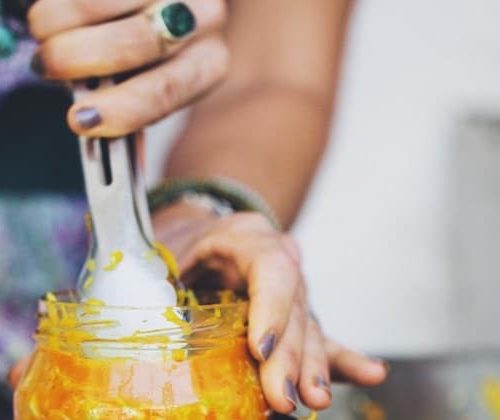Foster a Healthy Gut with Probiotics, Prebiotics and Dietary Fibre
Working beyond 9 to 5 is common in Hong Kong. Long hours at the office, skipping meals, eating at irregular times and stress can throw off the healthy balance of bacteria in our colon. When our digestive system is out of sync, symptoms such as bloating, nausea, diarrhea and constipation may appear. Poor gut health will not only affect our productivity, it will also affect our sleep, mood, and overall health. While we may not be able to change our days and hours of work, diversifying our diet with a variety of foods can help foster a healthy gut.
Both good and bad bacteria reside in our gut, but if you are looking to improve your digestive health, you may want the good bacteria to outnumber the bad bacteria by eating foods and beverages with probiotics. Probiotics are notorious for being the friendly bacteria that naturally live in our gut. They help decrease the number of disease-causing bacteria, reduce symptoms of diarrhea and bloating, and give our body’s immune system a boost.
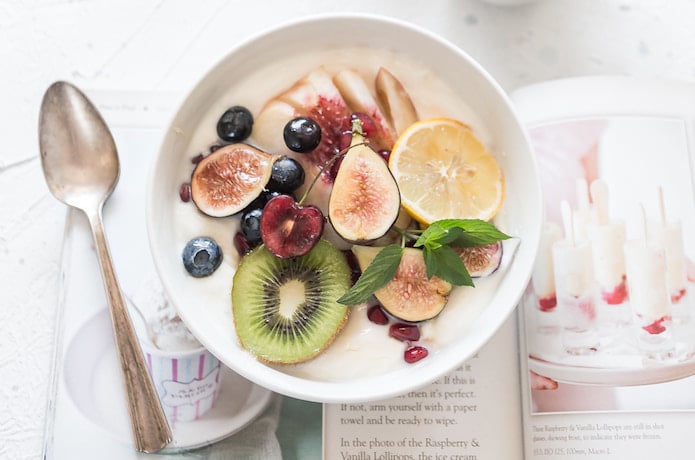
Probiotics in Dairy Products
It is not necessary to run to a health food store to purchase probiotic supplements for maintaining a healthy flora in your gut. Probiotics are readily found in yogurt and kefir because strains of live bacteria, such as Lactobacillus and Bifidobacterium are added to milk to make yogurt. These live cultures of bacteria change the natural sugar present in milk to lactic acid. If you are lactose intolerant, this is good news as you are less likely to experience diarrhea with the naturally occurring milk sugar being ‘digested’. If you are looking to eat yogurt and kefir to boost your good intestinal bacteria count or if you are lactose intolerant but would still like to enjoy some dairy products, look for products that state ‘probiotic’ and ‘live bacterial cultures’ on the packaging label as these products would include the live strains of bacteria.
Probiotics Beyond Dairy:
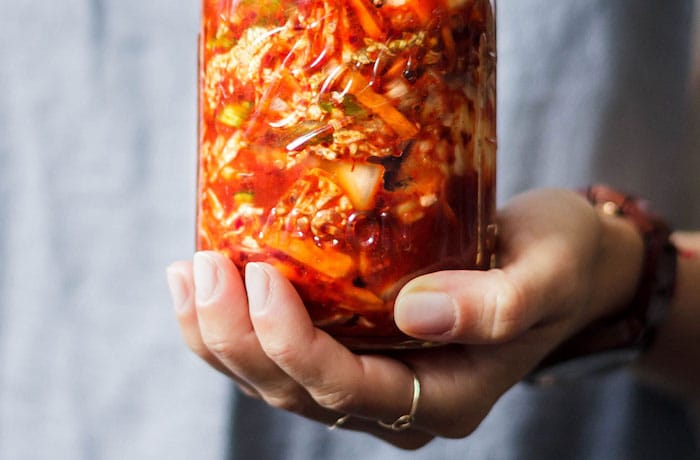
Kimchi
Beyond dairy products, probiotics can be found in fermented foods such as kimchi. The next time you are dining in Korean restaurants, have some kimchi that comes as a side dish. While kimchi is a gut-friendly food, it is high in sodium so limit your serving at each sitting to no more than ¼ cup.
Tempeh
Another notable fermented food with probiotics is tempeh. A popular Indonesian food, tempeh is similar to tofu in texture but is nuttier and firmer. Like tofu, tempeh is a meat alternative, can be marinated and grilled, and added to salads, chillies, rice and pasta dishes. Tempeh can be found in the refrigerated sections of Indonesian grocery stores all around Hong Kong.
Miso and Natto
If you love Japanese food, you must have had miso and natto. These Japanese staples have probiotics and are rich in protein. Aside from consuming miso in soup form, it can be incorporated into homemade sauces and salad dressings. Natto, on the other hand, is an acquired taste due to its slimy texture and distinct aroma. If you are a natto lover, you can add natto to your salads or to your Sunday brunch omelet. Both miso and natto are readily found in specialty supermarkets, such as Sogo and ThreeSixty.
Kombucha
In recent years, the rising fame of kombucha as a probiotic beverage has received a lot of attention from health advocates and even health conscious consumers. A tart and fizzy tea, kombucha is a fermented beverage that comes in a variety of flavours. While there is still a debate amongst researchers whether kombucha provides any health benefits, you can find various brands of kombucha readily available in local health food stores, such as Green Common and Just Green. Taboocha brews and bottles kombucha locally in Hong Kong. You can also find their beverages in the health food stores mentioned above. Do note that a wide array of bottled kombucha is sweetened with sugar, so if you are trying to cut down on your sugar intake, consume kombucha in moderation.
Prebiotics:
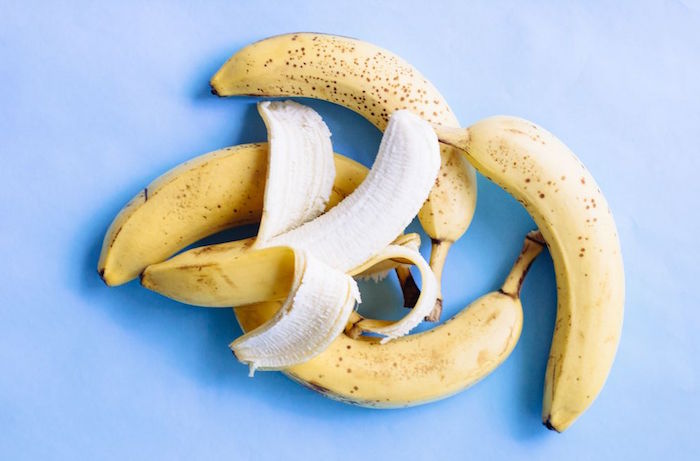
Probiotics and prebiotics go hand in hand. Prebiotics, a form of non-digestible carbohydrate, is probiotics’ main source of food. As a result of eating prebiotics, probiotics produce an acid compound called lactic acid, which keeps the gut lining healthy. Inulin, one form of prebiotics, is commonly found in vegetables such as garlic, onion, asparagus, leeks, artichokes; in fruits such as tomatoes and bananas; and in whole grains such as whole wheat, barley, oats, quinoa, and millet.
Fibre Rich Foods:
You probably have repeatedly heard about the benefits of dietary fibre, but did you know insoluble and soluble fibre have different and distinct properties?
Insoluble fibre keeps you regular by bulking up your stools and helps food pass through the digestive tract more quickly. If you are trying to prevent constipation, you will need to consume foods with insoluble fibre, which can be found in whole grains, bran cereals, soybeans such as edamame, beans and lentils.
Unlike insoluble fibre which does not absorb liquid, soluble fibre absorbs water and makes your stools sticky and soft. Sources of soluble fibre include oats, oatmeal, barley, peas, edamame, beans, lentils and fruits such as apples, oranges, peaches, and vegetables such as eggplants and okra. Soluble fibre is also known to help in lowering cholesterol and controlling blood glucose.
We need both types of fibre to maximize its health benefits. Loading up your diet with vegetables and fruits will give you the two for one effect, particularly when you consume the entire item. For example, an apple provides both insoluble fibre (i.e. the apple skin) and soluble fibre (the meat of the apple).
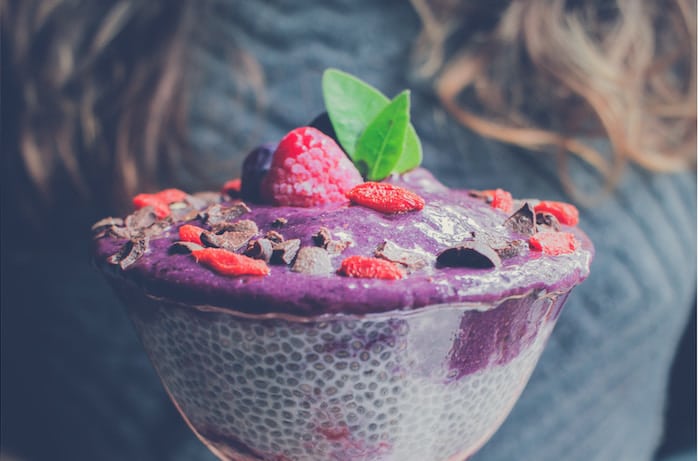
In addition to consuming vegetables and fruits, which are excellent sources of various vitamins, minerals and dietary fibre, including nuts and seeds such as almonds, Brazil nuts, pecans, walnuts, chia, flax, sunflower and pumpkin seeds, as part of a healthy diet is also beneficial in maintaining a healthy gut.
How much fibre do you need? Adult women up to 50 years old are recommended to have a minimum of 29 grams per day, and men up to 50 years old to have a minimum of 38 grams per day. While this may seem daunting as individuals generally eat only half the recommended amount, meeting the recommendations is attainable. Here are some suggestions to increase your dietary fibre intake:
- Add your favourite berries and ground flax or chia seeds to your oatmeal
- Have a small handful of mixed, salt-free nuts as snack
- Bring cut-up vegetables and a low fat dip to work as your mid-afternoon snack
- Give your salad and stir fries an extra crunch by adding edamame
- Have at least half a plate of veggies with your meal; if you eat with a bowl, fill half the bowl with veggies
Featured image credited to Greenkitchenstories.com via Pinterest, image #1 sourced via Unsplash, image #2 credited to Eat-this.org via Pinterest, image #3 credited to nutritionstripped.com via Pinterest, image #4 sourced via Unsplash





 Eat & Drink
Eat & Drink



 Travel
Travel



 Style
Style



 Beauty
Beauty



 Health & Wellness
Health & Wellness


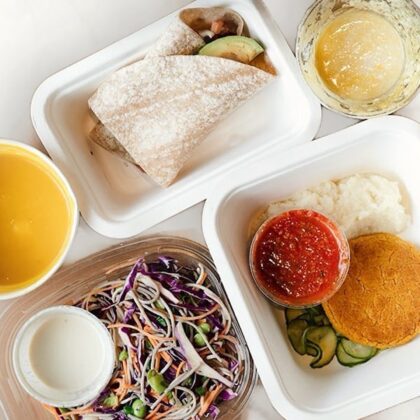
 Home & Decor
Home & Decor



 Lifestyle
Lifestyle
 Weddings
Weddings



